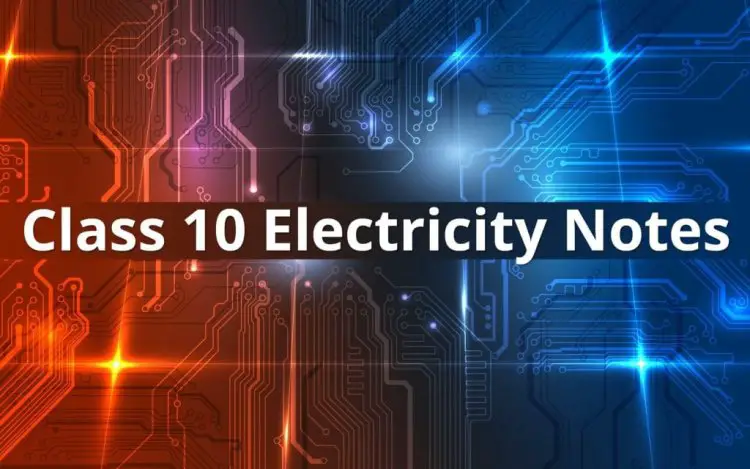Electricity
This chapter provides a foundational understanding of how electrical circuits operate and how electricity is used in practical applications. It equips students with the knowledge to analyze and solve problems related to electrical circuits and devices.

Electricity covers fundamental concepts related to the flow and use of electric current. Here’s a detailed breakdown of what you will study:
1. Introduction to Electricity
Electric Current:
- Definition: Electric current is the flow of electric charge through a conductor.
- Unit: Measured in Amperes (A).
- Direction: Conventional current flows from the positive terminal to the negative terminal of a power source.
- Formula:
- I = Current (in Amperes)
- Q = Charge (in Coulombs)
- t = Time (in seconds)
Potential Difference (Voltage):
- Definition: The potential difference between two points is the work done to move a unit positive charge from one point to another.
- Unit: Measured in Volts (V).
- Formula:
- V = Voltage (in Volts)
- W = Work done (in Joules)
- Q = Charge (in Coulombs)
Resistance:
- Definition: Resistance is the opposition that a substance offers to the flow of electric current.
- Unit: Measured in Ohms (Ω).
- Formula:
- R = Resistance (in Ohms)
- V = Voltage (in Volts)
- I = Current (in Amperes)
2. Ohm’s Law
Statement:
- Ohm’s Law states that the current flowing through a conductor between two points is directly proportional to the voltage across the two points, provided the temperature remains constant.
Formula:
-
- V = Voltage (in Volts)
- I = Current (in Amperes)
- R = Resistance (in Ohms)
Applications:
- Using Ohm’s Law to calculate the voltage, current, or resistance in a circuit.
3. Series and Parallel Circuits
Series Circuits:
-
Description: Components connected end-to-end, so there is only one path for current to flow.
-
Total Resistance:
-
Current: Same through all components.
-
Voltage: Divided among components.
Diagram:
+ ---- R1 ---- R2 ---- R3 ---- -
Parallel Circuits:
-
Description: Components connected across the same two points, creating multiple paths for current to flow.
-
Total Resistance:
-
Current: Divided among the branches.
-
Voltage: Same across all branches.
Diagram:
+ ---- R1 ---- | | | | + ---- R2 ---- | | | | + ---- R3 ---- | -
4. Electrical Power and Energy
Power:
- Definition: Power is the rate at which electrical energy is consumed or converted.
- Formula:
- P = Power (in Watts)
- V = Voltage (in Volts)
- I = Current (in Amperes)
Energy:
- Definition: Energy is the total amount of work done or energy consumed over time.
- Formula:
- E = Energy (in Joules or Kilowatt-hours)
- P = Power (in Watts)
- t = Time (in Seconds or Hours)
5. Heating Effect of Current
Concept:
- When an electric current flows through a conductor, it generates heat due to resistance.
Joule’s Law:
- Formula:
- H = Heat produced (in Joules)
- I = Current (in Amperes)
- R = Resistance (in Ohms)
- t = Time (in Seconds)
Applications:
- Electric heaters, toasters, and other appliances utilize the heating effect of current.
6. Safety Measures and Devices
Fuses and Circuit Breakers:
- Purpose: Protect electrical circuits from damage due to excessive current.
- Fuses: Contain a wire that melts when the current exceeds a certain limit, breaking the circuit.
- Circuit Breakers: Automatically switch off the circuit when the current is too high.
7. Simple Circuits and Components
Components:
- Resistors: Limit the flow of current.
- Bulbs: Convert electrical energy into light and heat.
- Switches: Control the flow of current in a circuit.
Reading Circuit Diagrams:
-
Understanding and drawing basic circuit diagrams using standard symbols for components.
Diagram Symbols:
- Battery: Two parallel lines, one longer (positive) and one shorter (negative).
- Resistor: A zigzag line.
- Bulb: A circle with a cross inside.
- Switch: A line that opens or closes the circuit.
Summary
The chapter on Electricity introduces the basics of electric current, voltage, resistance, and their interrelationships. It explores Ohm’s Law, the principles of series and parallel circuits, and the concepts of electrical power, energy, and heating effects. Understanding these fundamentals is crucial for analyzing and designing electrical circuits and for applications in everyday life.
What's Your Reaction?





















